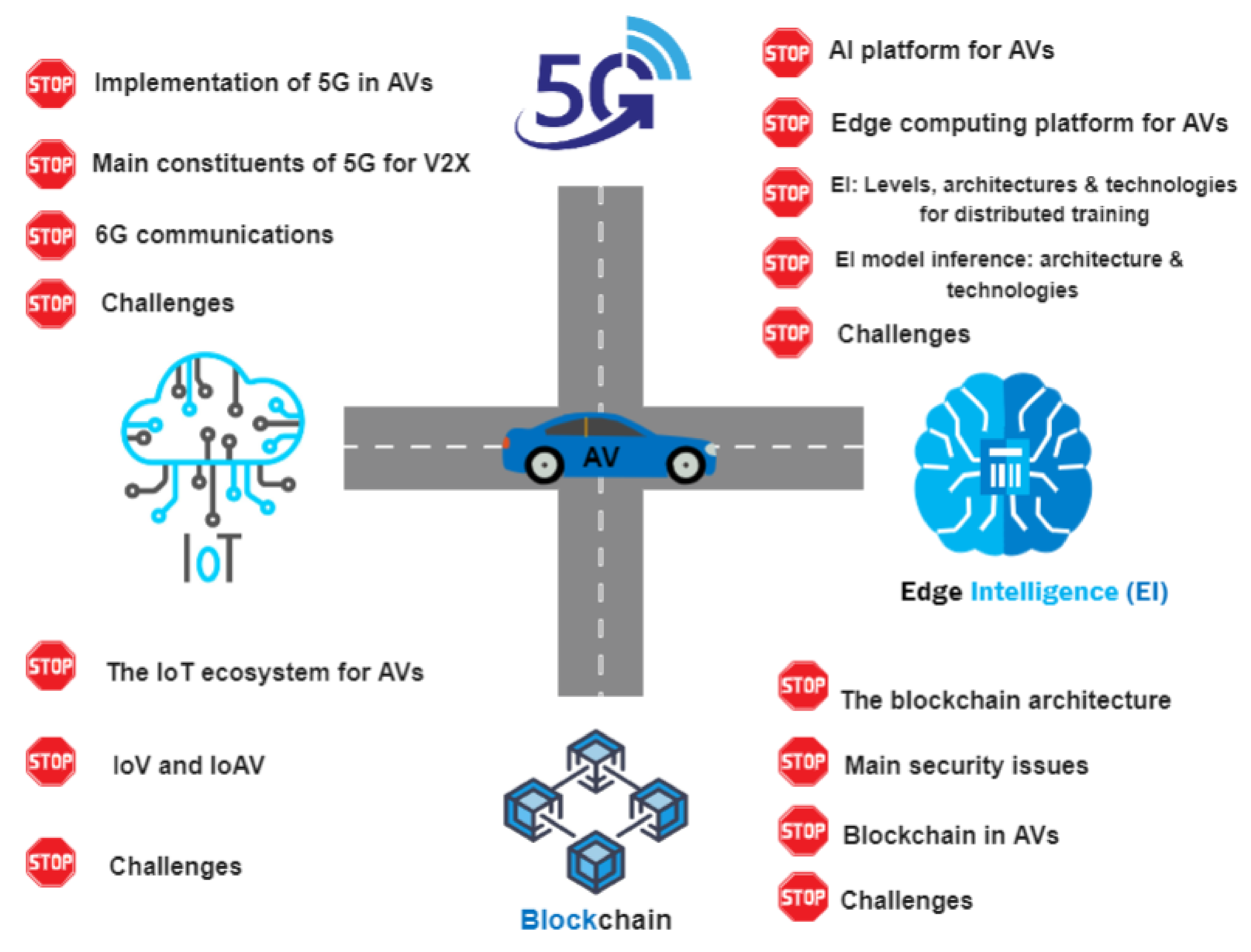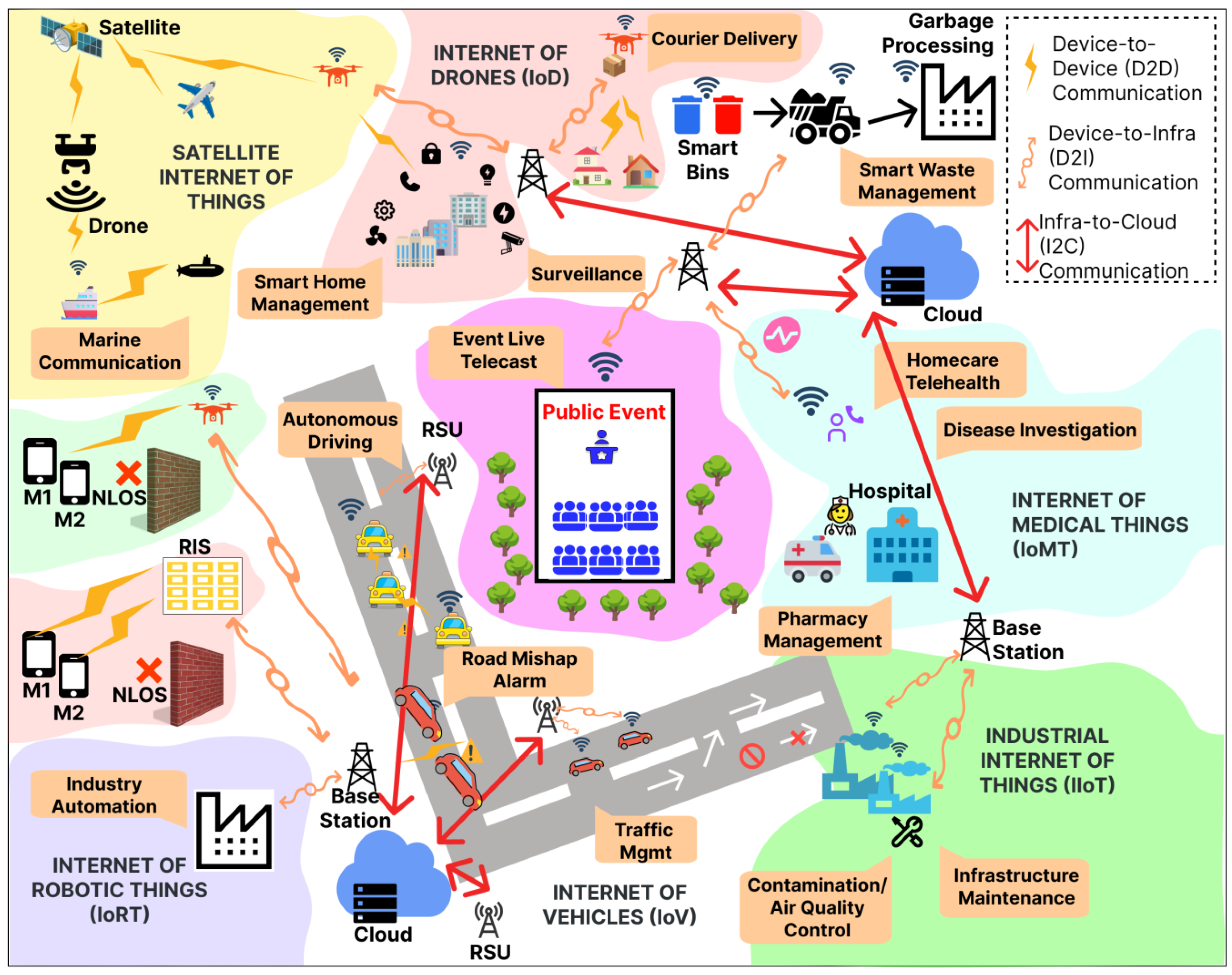Beyond Connection: How 6G Will Transform Our Digital Landscape
The digital revolution never stops. While many of us are still getting comfortable with 5G technology, the tech world is already buzzing with excitement about what comes next. I’ve spent years tracking technological developments, and I can tell you that 6G isn’t just another incremental upgrade – it’s poised to fundamentally alter how we interact with the digital world.
As we stand at the threshold of a new technological era, the possibilities seem endless. Behind the scenes, researchers and developers are working tirelessly to bring 6G capabilities to life, promising speeds up to 100 times faster than 5G. But what truly sets 6G apart isn’t just raw speed – it’s the revolutionary integration with Internet of Things (IoT) technology that will create immersive, intuitive digital experiences previously confined to science fiction.
Let me take you on a journey through this fascinating technological frontier, exploring how 6G will transform IoT applications, the challenges we face in implementing this technology, and the exciting advances being made right now in research labs around the world.
The Evolution: From 1G to 6G

The telecommunications journey has been nothing short of remarkable. I still remember the days of 1G when simply making a voice call was considered groundbreaking. With each generation, we’ve witnessed astonishing leaps in capabilities. 2G brought us text messaging, 3G introduced mobile internet, 4G delivered high-speed data and video streaming, and 5G began connecting our world in ways previously unimaginable.
Now, 6G promises to take connectivity to unprecedented heights. Unlike previous generations that focused primarily on connecting people, 6G aims to create seamless networks that intelligently connect people, things, and intelligence. The anticipated capabilities are staggering – data rates potentially reaching 1 terabyte per second, latency measured in microseconds rather than milliseconds, and nearly 100% reliability.
What truly excites me about 6G is how it will fundamentally change our relationship with technology. We’re moving toward a world where digital and physical realities blend together, where communication happens instantaneously across vast distances, and where the very concept of “being online” becomes obsolete because connectivity becomes as ubiquitous and unconscious as breathing.
“6G will not merely connect things – it will create an intelligent fabric that weaves together physical and digital realms, effectively dissolving the boundaries between humans and machines in our everyday experiences.”
Revolutionary Use Cases for 6G-Powered IoT

When I consider how 6G will transform IoT applications, I’m genuinely amazed by the possibilities. Let me share some of the most fascinating use cases that researchers and industry experts are already exploring:
Holographic Communication
Imagine attending a business meeting where participants from around the world appear as lifelike 3D holograms, complete with realistic spatial audio and haptic feedback. This isn’t science fiction – it’s what 6G aims to deliver. The massive bandwidth and ultra-low latency of 6G networks will finally make real-time holographic communication practical, effectively eliminating the barriers of distance in human interaction.
I recently spoke with researchers developing prototype holographic systems who confirmed that current 5G networks simply can’t handle the 1 terabyte per second data streams required for truly immersive holographic experiences. 6G will change that.
Extended Reality Everywhere
Current augmented and virtual reality systems offer glimpses of what’s possible, but they’re limited by processing power and connectivity constraints. With 6G, we’ll see the emergence of extended reality (XR) as an everyday tool rather than a special experience.
Picture walking down a city street while digital information overlays your field of vision, perfectly integrated with the physical world. Your XR glasses might highlight restaurants matching your dietary preferences, translate foreign text in real-time, or guide you through complex tasks with 3D visual instructions. The computational demands of these experiences will be distributed across the network rather than burdening local devices.
Autonomous Systems at Scale
While autonomous vehicles are already emerging with 5G support, 6G will enable vastly more complex autonomous systems operating in coordinated swarms. Imagine thousands of delivery drones navigating dense urban environments, fleets of agricultural robots working together to manage crops with unprecedented precision, or disaster response robots coordinating rescue efforts.
The reliability, speed, and massive connection density of 6G will be essential for these systems to function safely at scale. I’ve observed early trials of drone swarms that demonstrate both the potential and the networking challenges involved.
Tackling the 6G Implementation Hurdles
Despite the incredible promise, bringing 6G to market isn’t without significant challenges. As someone who’s followed network deployments for years, I can tell you that each generation faces increasingly complex hurdles. Here are the critical challenges we need to overcome:
- Spectrum limitations: 6G will likely operate in the terahertz frequency bands (100 GHz to 10 THz), which face serious propagation challenges. These high-frequency waves don’t travel far and can be blocked by buildings, rain, and even atmospheric gases.
- Energy efficiency: Higher frequencies and data rates typically require more power. Creating energy-efficient 6G networks is both a technical challenge and an environmental imperative.
- Infrastructure costs: The dense network of base stations needed for 6G could be prohibitively expensive to deploy globally, potentially widening the digital divide.
- Security and privacy: With billions more devices connected and sharing sensitive data, 6G networks will need revolutionary security approaches to protect against increasingly sophisticated threats.
I’ve spoken with network engineers who emphasize that solving the coverage issue for terahertz frequencies may require completely new approaches to network architecture. Some promising solutions include intelligent reflective surfaces that can bounce signals around obstacles and aerial platforms like high-altitude drones to provide coverage in challenging environments.
Bridging Physical and Digital: 6G Sensing Capabilities

One of the most fascinating aspects of 6G is how it will transform networks from pure communication systems into sensing platforms. The high-frequency signals used by 6G can be leveraged not just to carry data but to map and monitor the physical environment with extraordinary precision.
I believe this sensing capability will revolutionize how we interact with spaces. Imagine walking into a building that instantly recognizes you without cameras, adjusts temperature and lighting to your preferences, and guides you to your destination with personalized cues. Or consider healthcare applications where your home could monitor vital signs without wearable devices, detecting early warning signs of health issues.
These capabilities create an entirely new dimension for IoT applications. The distinction between sensors and communication devices will blur as the network itself becomes a massive distributed sensor. This represents a fundamental shift in how we think about connectivity.
| Capability | 5G IoT | 6G IoT |
|---|---|---|
| Peak Data Rate | 20 Gbps | 1 Tbps (50× faster) |
| Latency | 1 millisecond | 10-100 microseconds |
| Connection Density | 1 million devices/km² | 10 million devices/km² |
| Reliability | 99.999% | 99.99999% |
| Positioning Accuracy | Meter-level | Centimeter or millimeter-level |
| Energy Efficiency | Baseline | 100× improvement |
Recent Breakthroughs Paving the Way

The journey toward 6G is accelerating, with breakthrough research happening around the globe. I’ve been closely following these developments, and several recent advances particularly stand out:
Terahertz Communication
Researchers at several universities have recently demonstrated viable terahertz communication systems operating at frequencies above 300 GHz. These experiments have achieved data rates exceeding 100 Gbps over short distances, proving the fundamental feasibility of terahertz communication despite previous skepticism.
The challenge now lies in extending ranges and developing affordable components that can operate efficiently at these frequencies. Advanced materials like graphene are showing tremendous promise for terahertz applications.
AI-Native Network Architecture
Perhaps the most revolutionary aspect of 6G will be its integration with artificial intelligence at the most fundamental level. Unlike previous generations where AI was added as an overlay, 6G networks are being designed as AI-native from the ground up.
I’ve seen early demonstrations of self-optimizing networks that can predict and adjust to changing conditions, automatically allocating resources where needed. These systems can identify patterns in network traffic and user behavior, then reconfigure themselves for optimal performance without human intervention.
Quantum Communication Integration
The intersection of quantum computing and 6G presents fascinating possibilities for network security and efficiency. Several research groups have successfully demonstrated quantum key distribution over experimental network links, suggesting that 6G may incorporate quantum-secure communication channels for critical applications.
While full quantum networks remain theoretical, hybrid systems that use quantum techniques for security while maintaining classical data transmission show immediate promise.
Global Race for 6G Leadership
Around the world, nations are positioning themselves for leadership in 6G technology, recognizing its strategic importance. This isn’t just about technological prestige – it’s about setting standards and creating economic opportunities in a market that will eventually be worth trillions.
China has already launched multiple satellites specifically for 6G research, while South Korea has established a comprehensive 6G research program with substantial government funding. The European Union, Japan, and the United States have all announced major initiatives and funding packages.
What fascinates me about this global competition is how it’s driving innovation at an unprecedented pace. Unlike previous generations where standards development moved methodically, 6G research is progressing simultaneously across multiple fronts. This parallel development approach may accelerate the timeline for commercialization, though it also risks creating incompatible standards.
Preparing for the 6G Future
While commercial 6G networks aren’t expected until around 2030, the foundations for this technology revolution are being laid now. Companies and individuals alike should begin considering how these capabilities might transform their industries and lives.
For businesses, I recommend forming cross-functional teams to explore potential 6G applications in your industry. The most transformative uses will likely come from combining 6G capabilities with other emerging technologies like AI, robotics, and extended reality.
For individuals, developing skills in areas like artificial intelligence, network technology, and data analysis will be valuable as 6G creates new categories of jobs. The most exciting opportunities may emerge at the intersection of physical and digital realms – areas like smart manufacturing, immersive entertainment, and precision healthcare.
As we move toward this hyperconnected future, I believe the most successful organizations will be those that view 6G not merely as faster connectivity but as a fundamental redesign of how humans, machines, and data interact. The technological foundations are being built today for a transformed world tomorrow.
The 6G revolution isn’t just coming – it’s already beginning in research labs around the world. And when it arrives, it will change everything.








